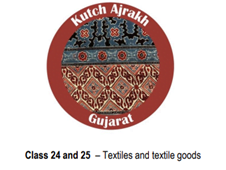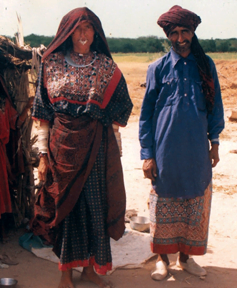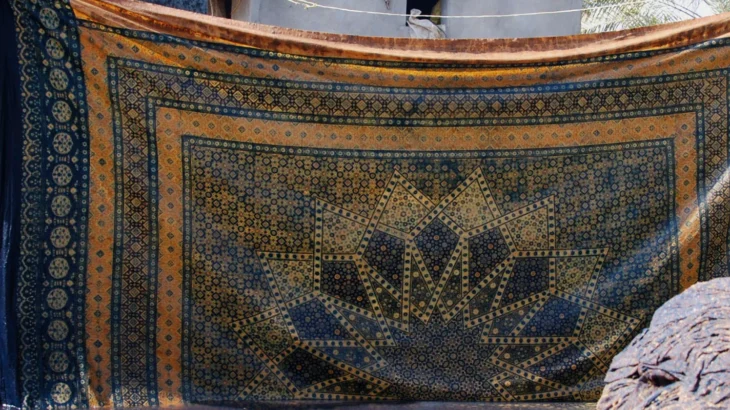Introduction
Exciting developments are underway for Geographical Indications in India, with over 60 products receiving the Geographical Indications (“GI”) tag recently. This is particularly noteworthy as it marks the largest number of successful GI applications in a single instance since the Geographical Indications of Goods (Registration and Protection) Act, 1999 Act was implemented in 2003.
The international GI framework is quite diverse, and jurisdictions have adopted combinations of protections best suitable to them and their global trade. Depending on where you are, the framework covers many interesting subject matters ranging from agricultural and food products to wines. As far as a combined reading of the Geographical Indications of Goods (Registration and Protection) Act, 1999 and The Geographical Indications of Goods (Registration and Protection) Rules, 2002 are concerned, it is used to identify “agricultural, natural or manufactured goods or any goods of handicraft or of industry and includes food stuff originating in a definite territory in India.” The legal protection granted through a successful registration certificate lasts for 10 years and needs to be renewed failing which the GI tag may be revoked. For an application to be successful, the applicant must be an association of persons, producers, organization or authorities established by or under the law. The key factor is that the applicant should represent the interests of the producers. This is a significant departure from the otherwise individual creator notion of IP laws.
Legal Framework and Cultural Significance of GIs in India
The distinguishing characteristic of these themes, in contrast to other IP subject matters, lies in their cultural significance. As per the GI registry and Journals, applicants are obliged to show proof of origin through historical records. For instance, GI Journal No 191 released in May 2024 contained GI application details for the ‘Bodo Aronai’ which is a small scarf representing the culture of Bodo people. Under proof of origin, the below is listed:
“Bodo community’s weaving culture is considered as dignitary work. Aronai has been in the Bodo culture since time immemorial and it occupies a very significant position in the Bodo legacy. The making of Aronai not only symbolized the weaver’s dedication but also their distinct creative process. The designs in Aronai were inspired by nature and sentiments of the community and implicates the most vibrant and colourful traditional touch.”
Under proof of origin (historical records), GI Journal no 188 issued in December 2023, Ajrakh’s applications said:
“Evidence of the Indian craftsman’s unsurpassed prowess with printed and dyed cotton clothes appears throughout history, with the domestic technology achieving worldwide desirability and a high trade value. Historically examples of block print from India exhibit similar aesthetics, to Ajrakh, hinting of patterns of a vital global trade for these essentially local use textiles. Thus, it is no surprise that even today the region at the delta of the great river Indus is still home to a thriving community of expert cloth printers and dyers, embedded within the material culture of the region.”

While GIs may not fully cover the protection of intangible cultural heritage and traditional knowledge, they do serve as a prospective tool for pushing the current IP regime to offer protection to cultural products that embody intangible cultural heritage. Given the link between specific products and geographical locations, GIs play an important role in empowering communities by helping them preserve their traditional cultural expressions.
Kutch Ajrakh: A Case Study
When examining the importance of the GI framework in safeguarding authentic products, it is essential to consider its role in the textile industry. Here, the cultural and economic significance of traditional crafts like Ajrakh are deeply interconnected. The Khatri community traces its roots back several centuries, with historical records indicating their presence in the Indian subcontinent since the medieval period. Traditionally, Khatris are known to have originated from the Sindh region (now in Pakistan) and migrated to various parts of India, particularly Gujarat and Rajasthan. This migration brought with it a rich legacy of textile artistry, especially the Ajrakh block printing technique. Around 400 years ago, artists from the Khatri community were invited by the King of Kutch to bring their intricate and exclusively handcrafted block-printing technique from Sindh to the banks of the Dhamadka River in Kutch.
Dr. Ismail Mohamed Khatri, globally acclaimed as a master artisan of the ancient Ajrakh craft and a 10th-generation practitioner, is celebrated for his tireless efforts in reviving this traditional art form. In the GI application, he is mentioned as the president of the Ajrakhpur Hastkala Vikas Sangathan (the registered proprietor). The Khatri community also got their Kutch Bandhini GI registered in April 2021. The growing success in GI registrations for textiles can be credited to the support from the Textiles Committee (Ministry of Textiles, Government of India), Mr. Rajni Kant, a renowned GI expert known as the “GI Man of India,” and the National Bank for Agriculture and Rural Development (“NABARD”). NABARD is instrumental in the GI registration process and post-GI initiatives, including marketing linkages, branding, and promotion. It stands out as one of the first organizations in the country to implement specific GI policies and schemes.

A Jat Maldhari couple; the Jat man is wearing a traditional Ajrakh dhoti
Unlike many other forms of GIs, clothing items like textiles are deeply connected to the wearer’s personal and cultural identity. Ajrakh is a prime example of how traditional clothing items reflect both individual preferences and cultural heritage. It is not just a craft of economic value; it serves as a unifying factor, bringing together families of various classes and religious backgrounds, particularly within the Khatri community, which has generational ties to this art form. Ajrakh holds symbolic value in the cultural economy of Gujarat and mirrors the unique creative arts, culture, and traditional heritage of both Sindh and Gujarat.
GIs vs Trademarks: Protecting Cultural Identity in Textiles
One of the main objectives of the GI framework is to protect consumers from getting confused between a genuine and a fake product. This is to avoid diluting the genuine product’s geographical production areas’ reputation. In that sense, the functions served by the GI framework appear to have some overlaps with trademarks. Trademarks are signs and symbols that distinguish the goods or services of one enterprise from those of another. GIs differ from trademarks insofar as GIs indicate some quality or characteristic of the good that relates to the geographic location. In addition, the GI tag is not used by a particular enterprise but is controlled by an authorizing entity that allows producers who meet the GI requirements to use the GI. For example, one may be required to make a product according to certain standards in a particular region to use the protected mark. Accordingly, GIs do not appear to have an inherent value beyond their role in the perfection of market information.
GIs, however, do not restrict anyone from wearing specific outfits, just as they do not prevent the consumption of certain foods or drinks. Since culture is dynamic, the exchange of cultural products is common. Ajrakh is reflective of how a craft can evolve with market demands while respecting its traditional roots. The advent of the Industrial Revolution and the rise of mass-produced textiles led to a decline in traditional crafts. The labour-intensive nature of Ajrakh printing could not compete with the speed and efficiency of mechanized production. Despite this, some identifiable cultural groups seek to regulate the unauthorized use of their cultural works. While traditional IP laws have little to offer against such acts, GI registration is a potentially crucial first step and a lot of handicraft associations are showing confidence in it. It is as close as any IP legal tool can come to protecting cultural identity and heritage through a formal registration process.

Alia Bhatt’s Ajrakh sari is an ode to the ancient Indian block-printing method
Concluding Thoughts
The success story of Darjeeling tea in controlling global exports and becoming a well-known name worldwide is evident. Therefore, it is no surprise that weavers practising specific techniques and skills now also want to protect their brand value. Following this path, more textiles like Banaras Zardozi and Bandhani are actively securing their creations through GIs. Can the Ajrakh print GI tag achieve a similar success, surpassing the global fashion industry and mass production mechanisms? That remains to be seen. For now, registration is a promising starting point.
All the documents related to the registration of Kutch Ajrakh are available here.
This article is a part of the DNLU-SLJ (Guest Post) series, for submissions click here.
Ms. Niharika Salar is a PhD student at the School of Law at Queen’s University, Belfast. She is a recipient of the Northern Ireland Department of Economy postgraduate studentship to support her PhD studies. Ms. Salar, an experienced educator, has designed and taught courses on Intellectual Property Law to both undergraduate and postgraduate law students for over 3 years at NALSAR University of legal, one of the leading law schools in India.

